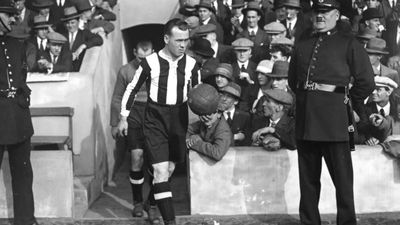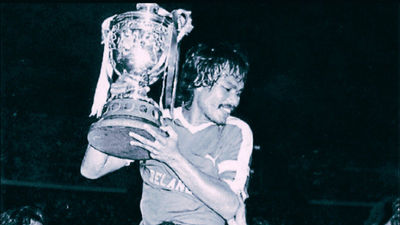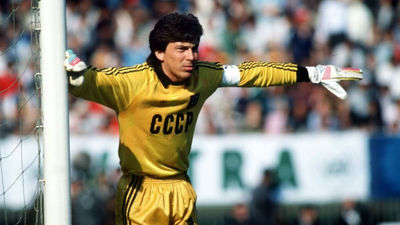Who is the best player? It's an age-old debate. In all honesty, the most recent version only has two players, although it may have had considerably more in the past. Favouritism, patriotism, or a bias based on outcomes against a favourite team are common reasons for the "best ever" label. Given the differences between different eras of the game, it's also a bit of a misnomer at times.
In this article, we look at the best XI of the 1930S. The formation is 2-3-5, a popular formation back then.
Goalkeeper: Ricardo Zamora (Spain)
For a while, Ricardo Zamora was, and possibly still is, Spain's best goalkeeper. He began his career with Espanyol and went on to spend three seasons with Barcelona, despite his parents' wishes for him to pursue a career in medicine, before returning to Espanyol and concluding his career with Real Madrid. Zamora has 46 caps for the Spanish national team and has won two league titles, five Spanish Cups, and an Olympic silver medal. The Zamora Trophy is still given out at the end of each season in La Liga to the best goalkeeper.
Right Full-Back: Domingos da Guia (Brazil)
Domingos da Guia was one of the most technical defenders in the history of Brazilian football. In the late 1920s, when defenders tended to prefer kicks to elegant passes, Domingos was the exception to the rule. In the 1938 FIFA World Cup finals, he appeared in four matches for Brazil. He was a part of the 1938 FIFA All-Star Team and was chosen the best player in the 1945 Copa America.
Left Full-Back: Jose Nasazzi (Uruguay)
Nasazzi was a defender for the Uruguayan national team. In 1930, he guided his team to victory in the inaugural FIFA World Cup. By the time of the first World Cup, he was known as "El Gran Mariscal," or "The Great Marshal," and had already won gold medals at the 1924 and 1928 Olympic Games, as well as the South American Championship in 1923, 1924, and 1926. On an individual level, he was named the best player at the FIFA World Cup in 1930 and the South American Championship twice (1923 and 1935). (the predecessor of Copa America).
Centre-Half: Luis Monti (Argentina & Italy)
Monti holds the distinction of appearing in two FIFA World Cup finals for two separate national teams. Due to his Romagnol ancestry, he played the first of these championships with his native Argentina in 1930, losing to Uruguay, and the second with Italy as one of its Oriundi in 1934, winning. Monti was on the winning side for the second time in a 2–1 triumph over Czechoslovakia. Due to his vast coverage of the pitch, he was given the moniker "Doble Ancho." He spent the majority of his club career at Juventus.
Left Centre-Half: Jose Leandro Andrade (Uruguay)
Andrade was a wing-half for the Uruguayan national team. "The Black Marvel" was his nickname (maravilla negra). He was recognised as one of the best footballers in the world during his peak, helping to Uruguay's dominance of international football in the 1920s, winning two straight Olympic Gold Medals and then the first FIFA World Cup. In 1923, 1924, and 1926, Andrade was a member of winning South American Championship (now known as Copa América) teams.
Right Centre-Half: Alvaro Gestido (Uruguay)
Gestido was an Uruguayan footballer who represented his country as a midfielder. From 1926 through 1941, he played club football for Penarol, making 445 appearances and scored 26 goals. He has 26 caps for his country, winning the FIFA World Cup in 1930 and the 1928 Summer Olympics. In 1967, his brother Oscar Diego Gestido was elected President of Uruguay.
Right Forward: Carlos Peucelle (Argentina)
Peucelle is regarded as one of Argentina's greatest ever wingers. He is also credited with launching "La Maquina" with River Plate, which went on to dominate South American football in the 1940s. Peucelle also played for Argentina's national football team and was a member of the squad that won the 1930 FIFA World Cup, scoring three goals and appearing in the final against Uruguay, which Argentina lost 2–4. Peucelle was a member of two winning Copa América teams, in 1929 and 1937. He appeared in 59 games for Argentina, scoring 12 goals in the process.
Right Centre-Forward: Giuseppe Meazza (Italy)
The name is Giuseppe Meazza, and the AC and Inter Milan stadium in Italy is dedicated to his honour and remembrance. Meazza was a showman, a match-winner, and a footballing genius who, with 287 goals, is Internazionale's all-time leading scorer. He won two World Cups and a total of more than 50 caps for his country, as well as three Italian titles.
Centre-Forward: Silvio Piola (Italy)
Piola is recognised as one of the finest attackers of his period, as well as one of the best Italian players of all time, thanks to various records he set in the sport. Piola led Italy to victory in the 1938 FIFA World Cup, scoring two goals in the final and finishing the tournament as the competition's second-best player and second top scorer. With 290 goals (274 in Serie A and 16 in the Divisione Nazionale), he is also the all-time leading goalscorer in Italian first league history.
Left Centre-Forward: Matthias Sindelar (Austria)
Sindelar was a centre-forward for the famous Austrian national squad known as the Wunderteam in the early 1930s, which he captained at the 1934 World Cup. He was dubbed "The Mozart of football" or Der Papierene ("The Paper Man") because of his little stature. He was regarded as one of the best pre-war footballers, recognised for his incredible dribbling ability and ingenuity. At the 1934 FIFA World Cup, he was awarded the Silver Ball.
Left Forward: Raimundo Orsi (Argentina & Italy)
Orsi was an Argentinean footballer who could play as a winger or a forward. He represented both countries at the international level, winning the Copa América in 1927 and the silver medal at the 1928 Summer Olympics in Amsterdam, Netherlands, with Argentina, as well as two editions of the Central European International Cup and the 1934 FIFA World Cup with Italy. Orsi began his club career at Club Atlético Independiente in Argentina, but it was with Juventus that he would have the most success.
















